What can you see and do on the Griboedov Canal?
- Boat trip: what better way to experience the romance of the Northern Venice than on a boat trip along the Griboedov Canal?
- Summer stroll: enjoy a summer day’s or White Nights’ stroll along the Griboedov, admiring the river and exploring historical streets along the way
- Architecture: the Griboedov is lined with interesting buildings and surrounded by historical streets, showcasing the different eras and architectural styles of St Petersburg
- Landmarks: visit Dom Knigi, the Church on Spilled Blood and Kazan Cathedral, all of which sit on the banks of the Griboedov Canal
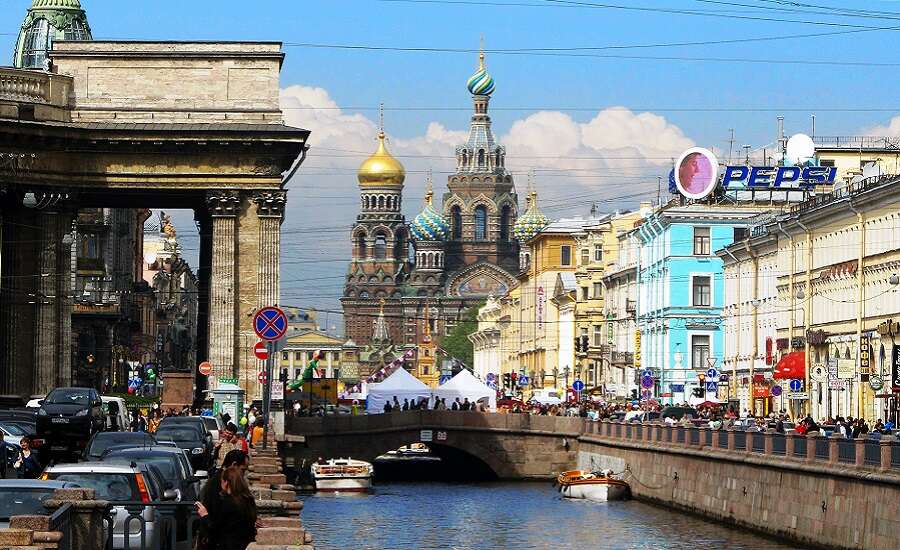
Photo by Tanyaspic, CC BY-SA 3.0, Wikimedia
Griboedov Canal, St. Petersburg
Over the centuries, the Griboedov Canal has evolved from a swampy stream into one of St Petersburg’s most romantic walking routes, lined with cultural and historical landmarks and bounded by quiet streets where you can escape the hustle and bustle of the city. On a boat trip or summer stroll down the Griboedov Canal, what are some sights you should look out for?
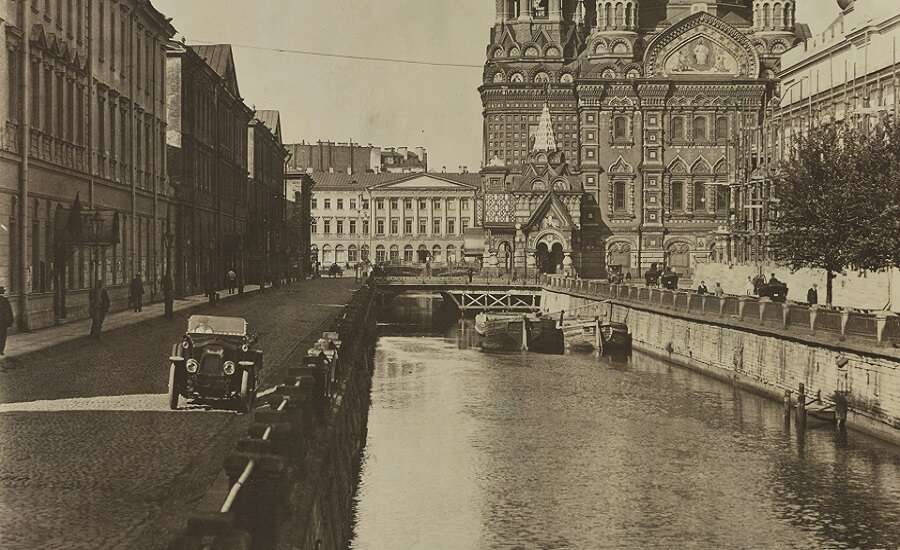
Photo by Wightman, Wikimedia
History of the Griboedov Canal
Today, St Petersburg’s Square of Arts is encircled by illustrious landmarks such as the Russian Museum, Mikhailovsky Theatre and the Church on Spilled Blood. Yet a few centuries ago, this famous site was a swamp where the River Krivusha originated. This stream was also known as the Black River for its dark waters, and the Deaf River for its remote location.
In 1737, plots of land along the River Krivusha began to be issued to naval workers, who were responsible not only for building their homes but also for the upkeep of the riverbank. Soon afterwards, the River Krivusha was connected to the River Moika, and it was proposed to dig a canal along the length of the Krivusha to protect the capital from flooding. Empress Elizabeth Petrovna was opposed to this, but Catherine the Great saw its potential – St Petersburg had been plagued by autumn floods which severely damaged the capital. Between 1764 and 1791, the Krivusha was deepened, widened and extended from the River Moika in the east of the city to the Fontanka in the west, and its banks were reinforced with granite. In honour of its founder, the once-quiet River Krivusha was renamed the Ekaterinsky Canal (Catherine Canal).
Did you know? In comparison to the Moika and Fontanka, the Ekaterinsky Canal traces quite a winding path across St Petersburg. This is thanks to Catherine the Great, who insisted that the canal should be dug along the river’s natural course.
As the Ekaterinsky Canal was constructed, the surrounding swamplands were drained so that new neighbourhoods could be built. Sennaya Square (the Hay Market) was St Petersburg’s main market, and wharfs were erected nearby on the canal to allow cargo to be unloaded. Although the Ekaterinsky Canal’s waters were initially much cleaner than those of the River Moika, the canal became increasingly polluted as it flowed through the heavy-populated slums located between the southern riverbank and Sennaya Square, which were immortalised in Fyodor Dostoevsky’s Crime and Punishment.
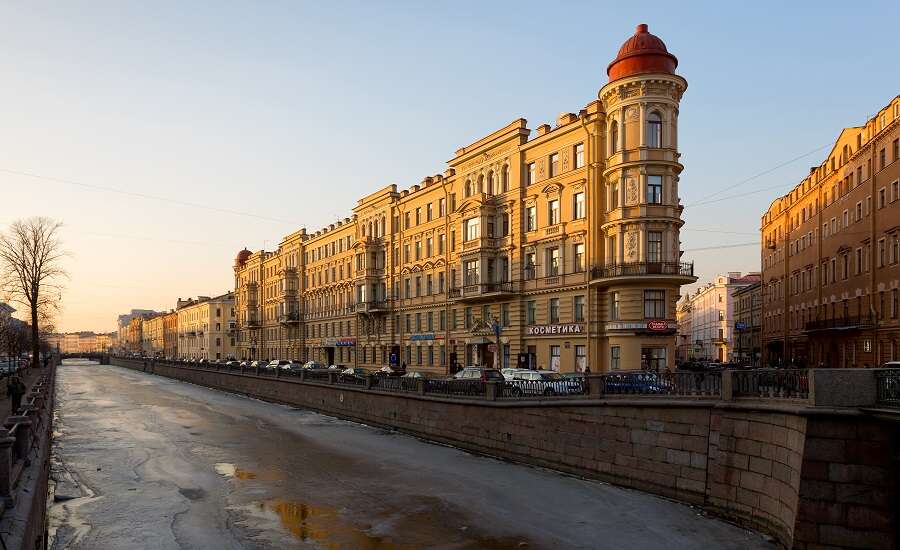
Photo by Pavlikhin, CC BY-SA 3.0, Wikimedia
In the 19th and 20th centuries, merchants and other businessmen started to build dokhodnye doma – multiple-occupancy residential buildings – along the Ekaterinsky Canal. Depending on the intended inhabitants, be they aristocrats and state officials or workers and the lower class, these apartment blocks could be plain and humble – or lavishly decorated with sculpted stucco, statues, elaborate metalwork balconies, coloured stone and domed roofs. Several mansions were also built on the riverbank to house members’ clubs, trade societies, banks and educational institutions. As a result, in just a short walk along the Griboedov Canal, you can admire many beautiful and colourful houses of a huge variety of architectural styles, including Art Nouveau, Eclecticism and Classicism.
Following the October Revolution, the Ekaterinsky Canal’s imperial-era name was abandoned in favour of a new name – the Griboedov Canal. According to one version, this was in honour of a famous revolutionary who had lost his life on the road to Bolshevik Revolution; another version alleges that the writer Alexander Griboedov, who resided on the riverbank in the early 1800s, bestowed his name on the canal.
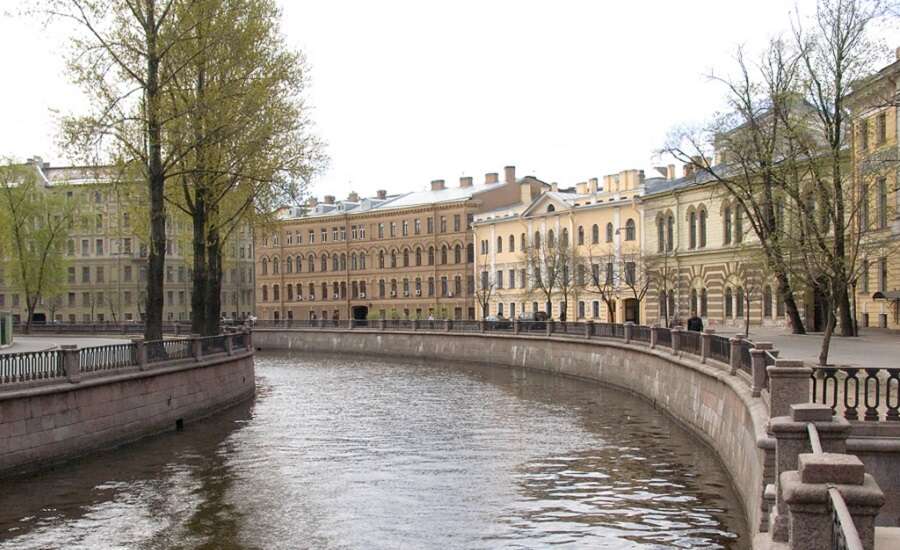
Photo by Lite, CC BY-SA 3.0, Wikimedia
What can you see and do on the Griboedov Canal?
- Church of the Saviour on Spilled Blood: in 1881, Tsar Alexander II was travelling along the Ekaterinsky Canal when he was assassinated by nihilist revolutionaries. To honour his father, Tsar Alexander III ordered the construction of a huge cathedral in the ‘Russian Style’ of architecture, including a canopy made from precious stones marking the very spot where the bomb exploded. This cathedral is one of St Petersburg’s most famous landmarks, decorated with enamelled domes and an interior entirely covered in rich mosaics.
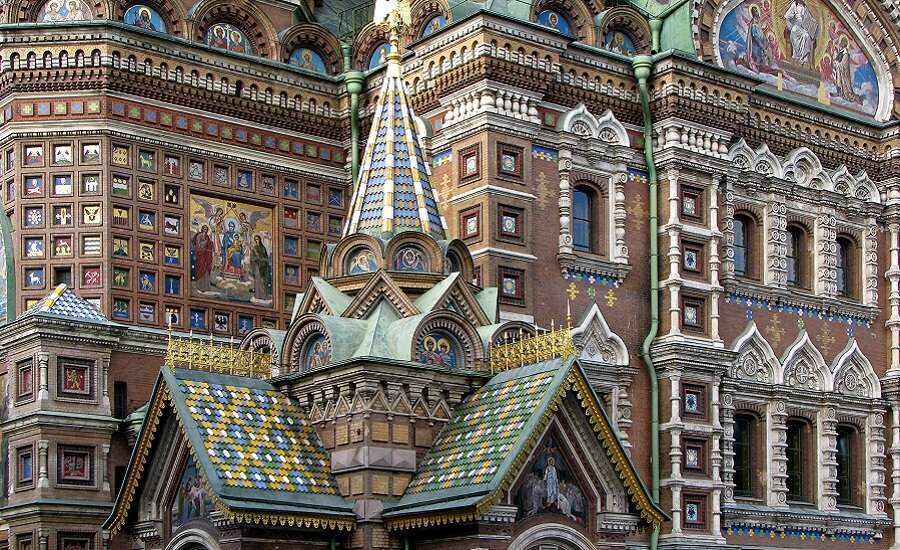
Photo by Liilia Moroz, CC0, Wikimedia
- Dom Knigi and the Singer Building: a masterpiece of Art Nouveau architecture, the Singer Building was built as the headquarters for the Singer sewing machine company. Not only is the Singer Building another of St Petersburg’s most well-known landmarks, but its lower floors are home to Dom Knigi, the city’s most famous bookshop and one of the largest in Europe.
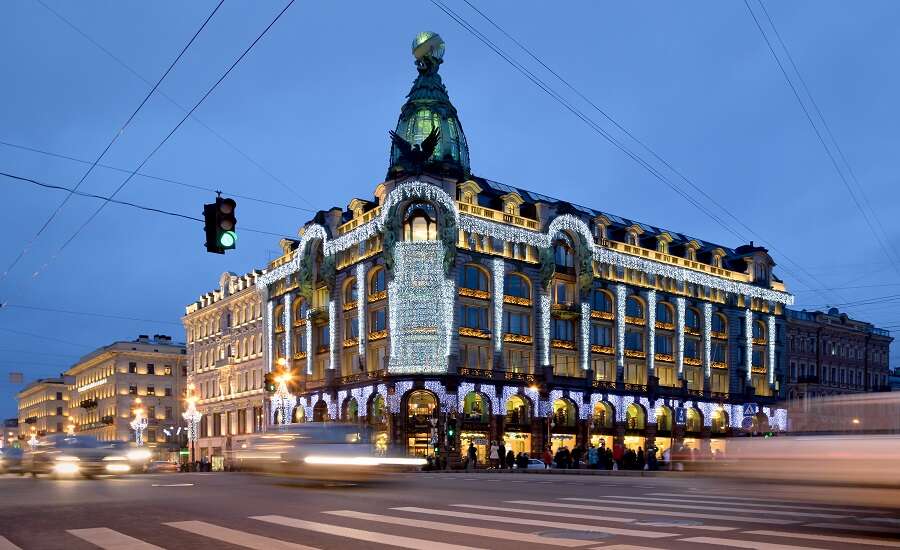
Photo by Pavlikhin, CC BY-SA 3.0, Wikimedia
- Kazan Cathedral: facing the Singer Building across Nevsky Prospekt lies Kazan Cathedral. It was modelled on St Peter’s Basilica in the Vatican City, with vast curved colonnades stretching around a central garden and fountain. Field Marshal Mikhail Kutuzov, who led the Russian army against Napoleon, is buried here.
- Bankovsky Bridge: just a couple of minutes’ walk from Kazan Cathedral lies this pedestrian bridge, flanked by four golden statues of griffins. From here, you can admire one of the most picturesque views in St Petersburg, a vista down the Griboedov Canal, past Kazan Cathedral and Dom Knigi, down to the Church on Spilled Blood.
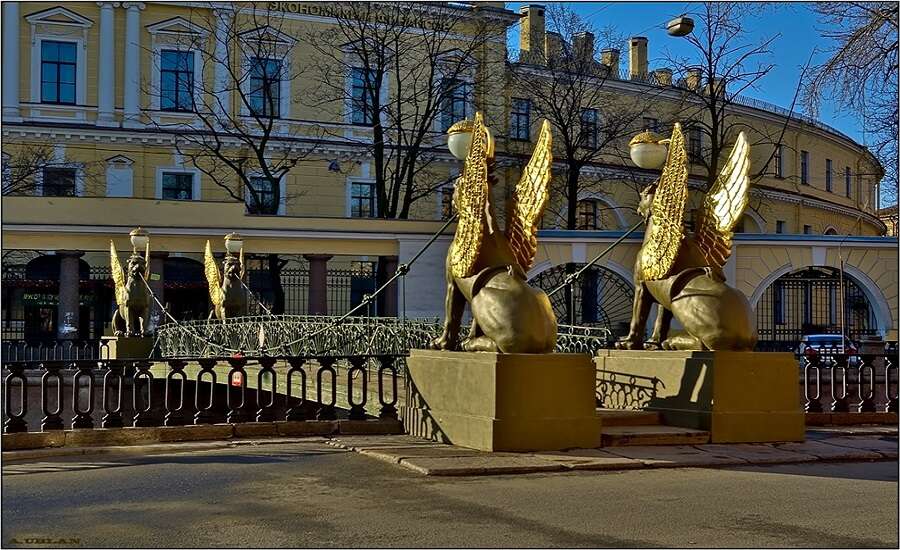
Photo by Vlad&Mirom, CC BY-SA 3.0, Wikimedia
- Sennaya Square: at the crossroads of the Griboedov Canal and Gorokhovaya Street (one of the three ‘trident’ roads radiating from the Admiralty), head southeast towards Sennaya Square. Although no longer the crime-infested den of Dostoevsky’s days, Sennaya Market still exists today and is located behind the metro.
- Picturesque riverside walk: from Sennaya Square until St Nicholas Naval Cathedral, the Griboedov loops around quiet historical streets and is lined with a colourful buildings in a multitude of architectural styles. This stretch of the canal is particularly tranquil and attractive, with plenty of side streets to explore. Here you can also find the famous Lion Bridge, an early-19th century pedestrian bridge guarded by four lion sculptures, which is a popular spot for photos among local residents and tourists.
- St Nicholas Naval Cathedral: this strikingly beautiful cathedral is dedicated to the glory of the Russian fleet, and recognisable for the golden cupolas crowning its turquoise walls and its elaborate bell tower. The cathedral is tucked away in a tranquil garden and encircled by historical streets, making it one of the most beautiful and romantic spots in St Petersburg.
- Semimostye: for Russians, as in other cultures, seven is a lucky number. From this footbridge, leading from St Nicholas Naval Cathedral over the Griboedov to Sadovaya Street, seven different bridges can be seen at once. Standing on the bridge, you should turn clockwise, cast your eye over each of the seven bridges, and make your wish! See our Fontanka article for another spot to make a wish in St Petersburg.
- Nikolskiye Ryady: St Petersburg is renowned for its creative clusters where you can find culture, gastronomy and entertainment in historical and industrial buildings. One of the newest is Nikolskiye Ryady, a former market in a Classical building. In the huge central courtyard you can find cafes with outdoor tables, an amphitheatre with seating and a bar, and an observation tower which offers an unforgettable view over this historical district of St Petersburg. Events such as concerts, fairs and festivals are held all year round.
- Kolomna: following the Griboedov Canal from Nikolskiye Ryadi, you will pass through the historical district of Kolomna – home to more peaceful side streets and beautiful architecture. At the centre of Pokrovsky Island (bounded by the southern bank of the Griboedov) lies Turgenev Square, a green space with walking paths and benches. At the nearby Malo-Kalinkin Bridge, the Griboedov empties into the Fontanka River. From here, you can take another riverside walk along the Fontanka, or take a bus or tram a few stops back into the city centre.






